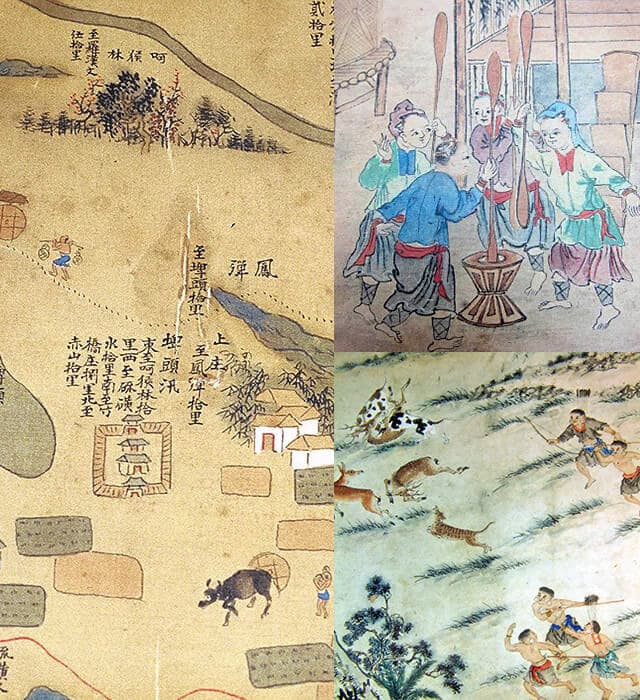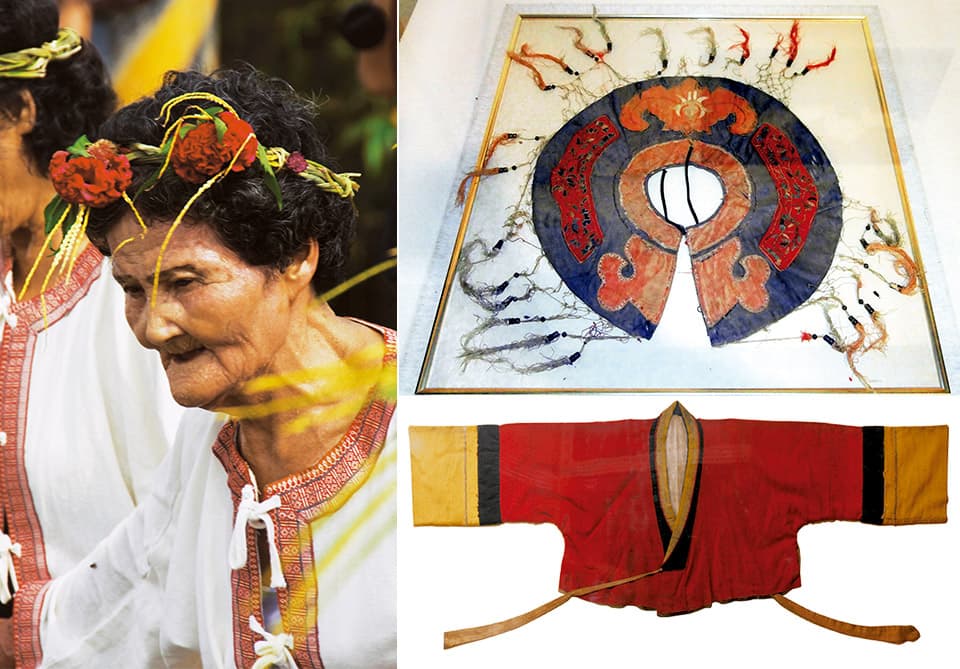Life in Siraya
Life in Siraya
There is much curiosity concerning the traditional culture of the Siraya Tribe. It is hoped that through the research of modern-day literature and history scholars, more information on the Sirayan culture can been unearthed. During the past four hundred years, the Siraya peoples have frequently interacted with other people groups, and their culture has become integrated with the local Han Chinese culture, forming the unique history and culture of Taiwan.
Because of this, it is currently impossible to recreate an original replica of the Sirayan life of four hundred years ago. It is only through limited historical documents and records that we are able to understand a little about Sirayan life and circumstances of that time.
Eating Habits Raw Animals, Pickled Seafood, and Wine Making
Rice was the staple of the Saraya peoples. They liked to eat pickled foods, and also had their own methods of making wine. The early Sirayans enjoyed eating their food raw; however, they seldom ate the animal meat, preferring instead to eat the animals’ raw internal organs.
Whenever the Sirayans caught a deer, they would kill it immediately, and together with the other members of the tribe, enjoy the raw meat with wine. As for the deer entrails, after they were extracted, they were placed in an earthen vessel, to be pickled. This food was referred to as "gaobangguei". To the Sirayans, this was the tastiest of delicacies.
Pickled seafood was also a Sirayan delicacy. The fish was salted and pickled together with the scales and innards. After a few days, it was then eaten together with various rotted foods. The Sirayans found this food very palatable.
Rice was the daily staple of the Sirayans. There were two kinds: One was the boiled kind, similar to the white rice of today. The other kind was the sticky glutinous rice, which was steamed in a bamboo steamer, and then rubbed and kneaded to become a kind of rice roll. It was convenient for eating when going out to work.
Wine was an essential drink in Sirayan life. According to the written records, there were two kinds of wine. One was a millet based wine, made from millet that had been pounded and chewed to become yeast, and placed on the ground for overnight fermentation. It would then be stirred and placed in an earthen jar. After a few days, it would start to smell sour. This wine was known as "Gudai". Another kind of wine was made by mixing steamed glutinous rice with yeast, and placing it in an earthen jar to ferment. It needed to be sealed in the jar for a long period of time before it could be used. This kind of alcohol was usually served to esteemed guests

Tattooing, Clothing, and Ornaments
According to the Gazetteer of Jhuluo County (1715), the Sirayan men would tattoo their bodies with various patterns such as "tadpole letters" and insects and fish. Normally the older people would assist in the tattooing process. Although this tattooing process was painful, they would have to endure the muscle pains, in order to, in the words of the tattooists, "not offend the ancestors".
By the eighteenth century, the Sirayans had already learned to dress in the same way as the Han Chinese. The Sirayan men mostly wore black and white. In summer they would wear a sleeveless article called a "longzih". In winder they wore piece of clothing called a "man", which consisted of a collar over their shoulders and hung down to their feet.
Sirayan women would not apply make-up, nor would they tie their hair up in a bun. Instead, they used a black cloth to tie back their hair. They would wear a short article above the waist, with a collar made from dog fur or weaved from different colored materials which would serve as an adornment. A piece of material would be wrapped around the lower part of the body. Below the knees, a colored cloth would be wrapped around the ankles.
Both Sirayan men and women enjoyed placing flowers or bird feathers in their hair, which would hang to their shoulders. They especially liked a plant that grew by the ocean, called a pandan tree. The flowers had a strong, rich smell, which was very well-liked by the Sirayans.

Social Ceremonies Weddings and Funerals
Sirayan society had clearly defined wedding ceremonies and traditions. Usually the groom had to be 20 years of age before he could marry. Although they did not know how to keep track of a person's age, they had firm distinctions of elderly and young. According to historical records, if a young man took an interest in a young woman, he would ask her mother, sisters or female friends. He would take a gift to the woman's house to propose, and display what he had brought as a dowry. If the woman’s parents were satisfied with the young man, they would accept his gift, and thus conclude the marriage discussions.
The Sirayans placed great importance on funerals. If a family held a funeral, silk would be tied by the door, and a bell would be sounded to inform the friends and family members. The body would be placed in front of the family home, and family and friends would carry wine to offer respects to the deceased and stroke the body to express their final farewells. The body would then be returned to the home to be buried along with the deceased's clothing.
In Sirayan funerals, little importance was placed on the coffin. Usually, a box previously used for storage by the deceased would be used. If there was no coffin, the body would be wrapped in deer skin. The burial place was in the home of the deceased, under his or her bed.
Pushing for the Revival of the Sirayan Language: The Tribal Elder Wan Zheng-hsiung
The tribal elder Wan Zheng-hsiung, a descendant of the Pingpu (Taiwan Plains Aborigines) residing in Sinhua Township, is director of the Tainan Pingpu Siraya Cultural Association, and a parishioner of the Kuobei Presbyterian Church, who has been for many years spearheading a movement to revive Sirayan culture, including a nearly impossible mission, which is to revive the Sirayan language. Wan Zheng-hsiung, assisted by the Council for Cultural Affairs, has embarked on a Sirayan language revival program.
With the assistance of his daughter, Wan Shu-juan, and Filipino son-in-law, Wan Yi-jia, they have discovered a bible left behind by a Dutch priest from the 17th century, which was translated into the Sirayan language, using Roman phonetic spellings, to successfully unlock the door to the Sirayan language, reviving the Sirayan language word-by-word, and phrase-by-phrase. With the old Dutch language being difficult to understand, Wan Yi-jia has gained assistance of the Dutch linguistic expert Karl to decipher the secret key to the Sirayan language.
There are plans in the future to stage Sirayan language seed camps, together with hosting children’s camps, which would bestow each Pingpu descendant with a Sirayan name. In 2008, the Tainan Pingpu Siraya Culture Association published a book entitled Siraya Glossary: Based on the Gospel of St. Matthew in Formosan (Sinkan Dialect) – A Preliminary Survey by Edgar Macapili. There are also plans to collaborate with Academia Sinica to compile Sirayan dictionaries with Roman phonetic spellings or to produce audio books.
Source: Sinhua Town Hall Office’s Tourism and Travel Website
Photos by WU,SHU-LING ,UDN’s reporter